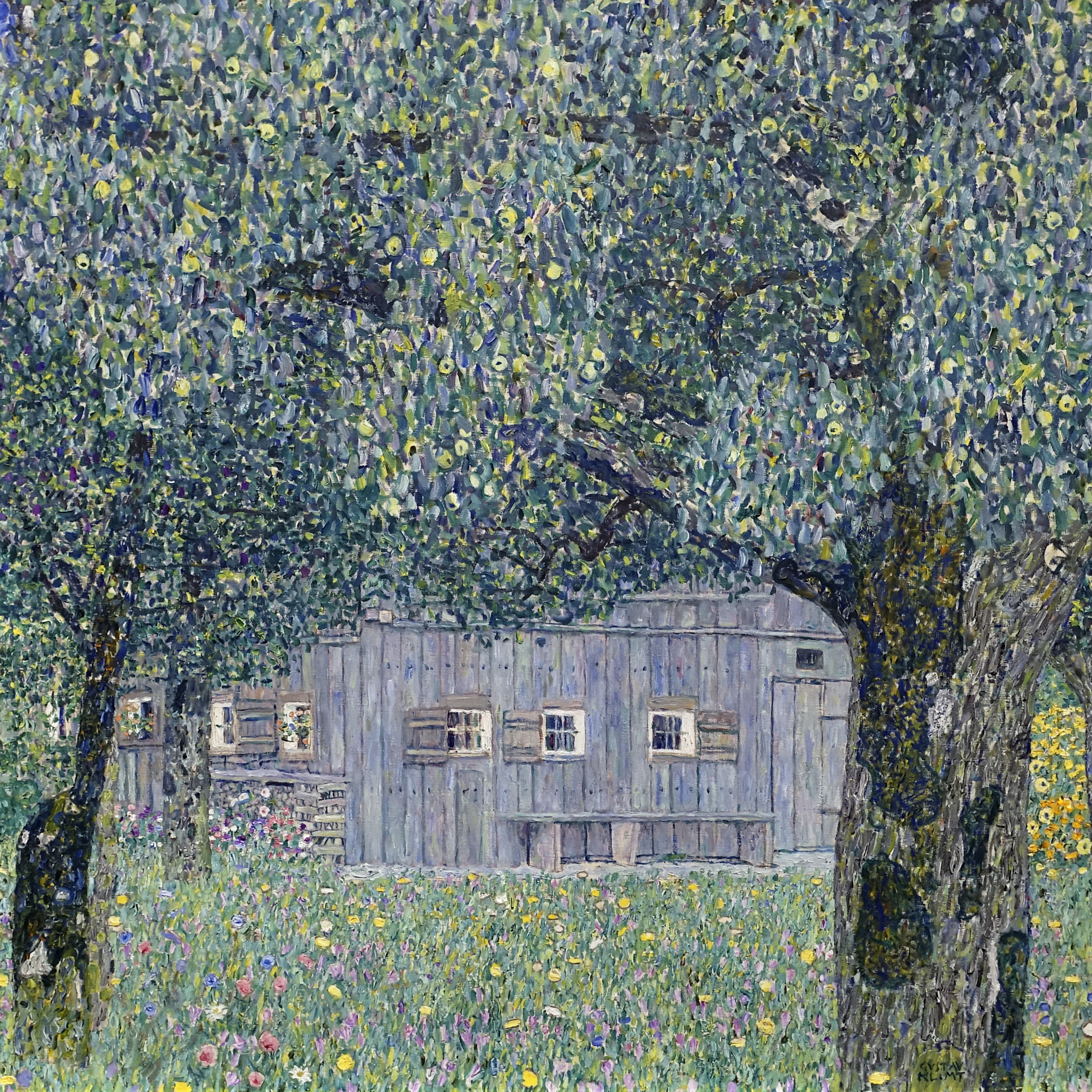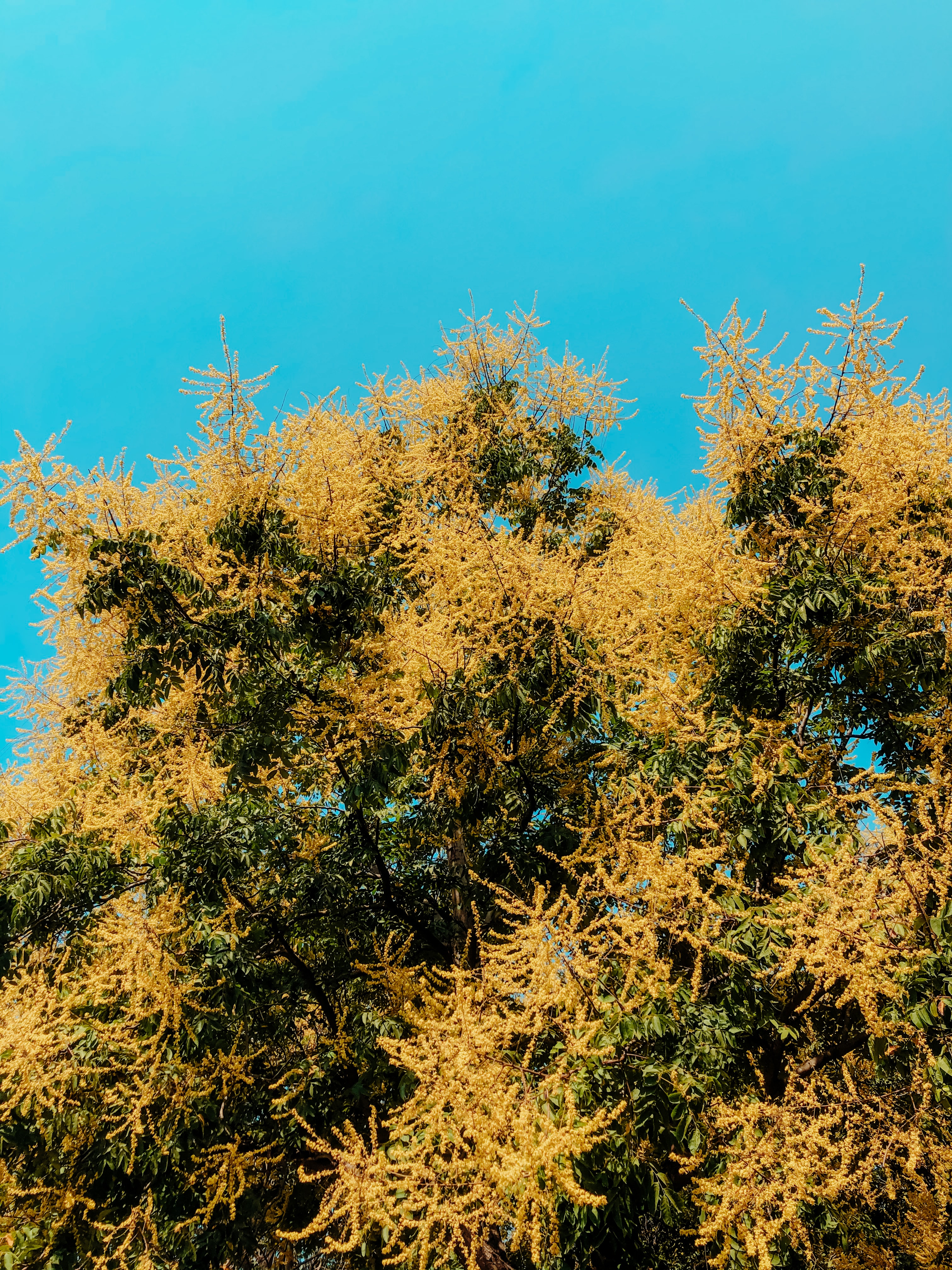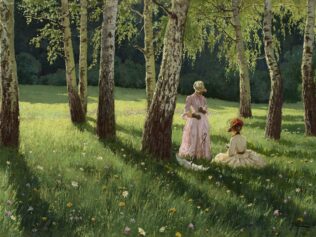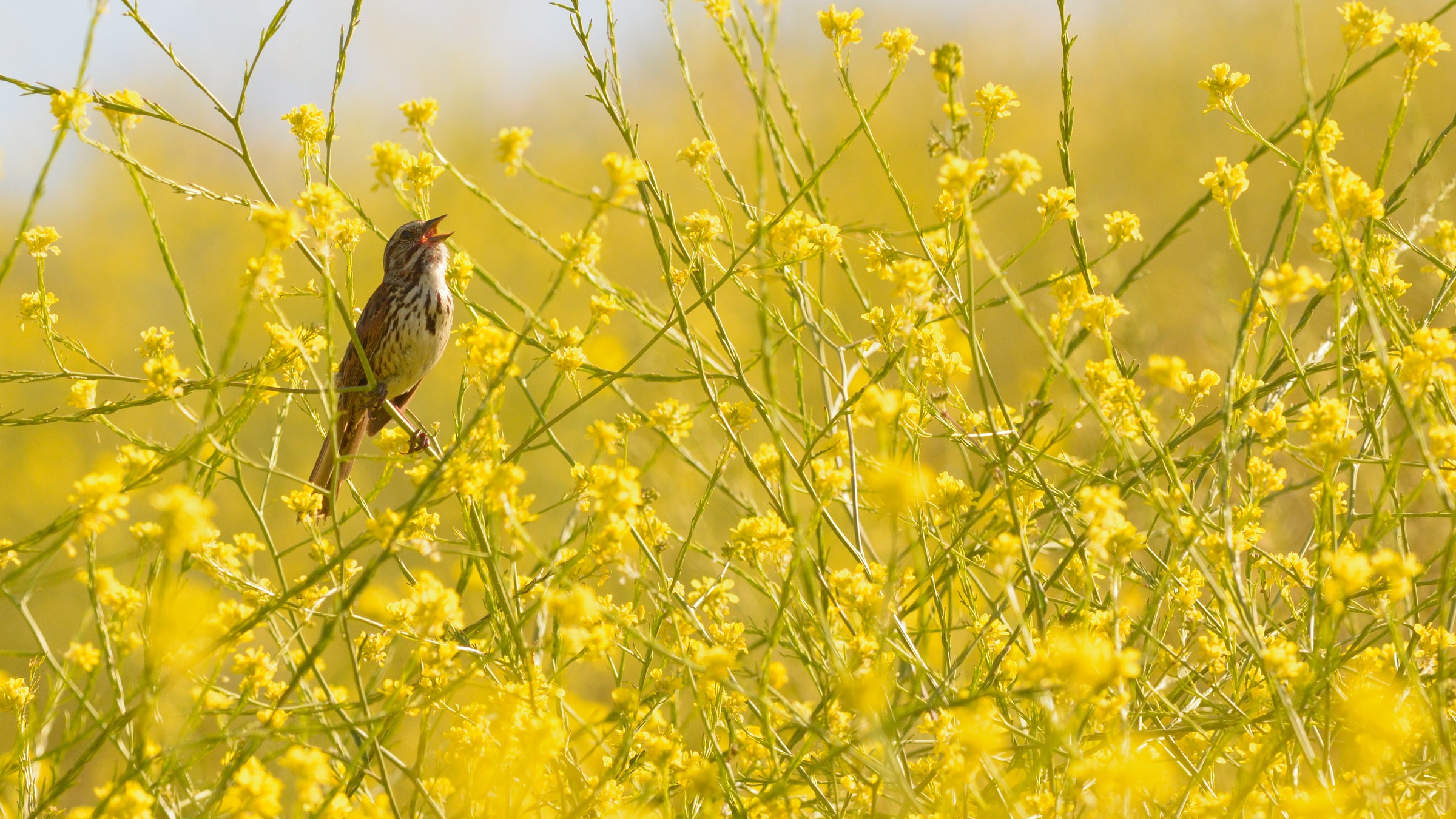
The maple survived in the midst of the world. It was more human than many people. Along with the other trees, it provided shelter. This is a landscape from my childhood.
Of all the trees I knew back then, the maple seemed the most human. It had fingers, hands and a nose. Actually, it had many noses making up an imaginary schnozzle – an idea that belonged to some transcendental tree face. We were closer than ever, biologically speaking, on the days when I would stop on my way home from school and pick up those green noses. I’d stick them on the tip of my own nose with a strange sense of satisfaction at being at one with a maple tree.
Where was the maple’s face? I had no idea, but I was sure it was there somewhere, which is why I examined the great plant so closely. I even went right out into the field to observe it from all angles. I stared at the canopy searching for facial features, wrinkles, anything that resembled a gaze. But there was nothing there except spirals of soft leaves. And a goldfinch, making a nest in the maple’s head like a nagging thought.
The exceptional
I also searched for the maple’s face in its bark; it was similar to the skin on my granddad’s face and neck. But I didn’t find any clear features – superficial cracks, smooth until recently, pleasant to the touch, no smell. As if transplanted from a human. And a single knot, which seemed to be eyeing me vigilantly from the other side of the things of this world. I felt the maple was deceiving me; that it was there somewhere, mapling away, but I could only see fragments of a larger whole.
Sometimes, on warm days, Mr Azdykiewicz, my classmate Piotrek’s granddad, would also sit on the bench under the maple. Mr Azdykiewicz had an old-fashioned hat, a waistcoat, and a moustache like Adolf Hitler. He sat beneath the tree, craning his neck repeatedly, staring up at the canopy. He must have been searching for something else there too. When I walked past him sleeping in the shade, I got scared that he might not still be alive.
Nothing looked like the maple tree. On the farm where I grew up, there were oaks, lindens and acacias, and trees full of fruit: sour and sweet cherry, pear and greengage. Apple trees – ‘Antonovka’ and ‘White Transparent’. I remember elm, ash and walnut. But none of those trees were like the maple. Neither the chestnut tree nor the old lonely thuja by the well – nothing in the world could compare to it. Perhaps only the leaves of the grapevine at St. Clement’s church – carved into the linden broadside of the boat-shaped pulpit, where me and the other altar boys would sometimes venture, because Father Leon Baszczyński never used it.
And the name itself? There seemed to be no explanation for this strange term, klon in Polish. Granddad pronounced it klun. Grandma just said “tree”. The word for elm in Polish, wiąz, suggested wiązać: ‘to tie or bind’. Meanwhile, the ash tree (jesion) seemed to shine (jaśnieć). But the maple gave nothing away, its lips sealed tight like its seeds. I couldn’t accept the fact that it was just called the maple. It wasn’t the right name. Someone had got it wrong. To me, it felt far too exceptional for that.
And there it was, lining my route to nursery, and later to school. It was a long walk through the fields to reach the village. Poplars, willows and maples grew along the path. In the emptiness of the fields, their presence was incredibly tangible, strangely alive. Magnificent personifications of botany, the types, shapes and boughs of which are remembered one’s whole life. There were nine or ten poplars. About five maples. There was also an orchard, always thick and dark, below the line of the road. The trees were like a school class, a group of friends, a herd.
The structure of the world
In the autumn, when the leaves were falling, the whole truth about the world came to light – that the trees are its spine, ribs and bones. The world was built on them, its skeleton constructed from great poplars, maples and ash trees. Similar to people. I could even sense the tree beneath my skin, the hard branches and boughs on which I existed, stretched out, like a kite. “Always away with the fairies,” my grandma would mutter. My spine was a small tree, a young maple.
My granddad’s farmyard had the most trees in the area. The farm looked like an oasis in the middle of nowhere – or, as we say in Polish, pośród szczerych pól, meaning literally ‘in the truthful fields’. I used to wonder if someone was lying – since the fields were truthful, what was dishonest? The forest? The trees? All the birds, foxes, rats and bats in the area flocked to the farm. I waited impatiently for them, discovered them with increasing surprise, distrusting of their peculiar biology.
A magnificent ash and a chestnut tree competed for central status in the middle of the yard. On the forest side, behind the frontage of the buildings, stood a few maples. There was also a huge oak that seemed suitable as the axis mundi of the agroforestry culture I felt I represented. Across from the oak stood a cherry tree and a few apple trees. Between them was a barn, covered with thatch and lichen. It stood along the shorter side of the yard, which was rectangular in shape and surrounded by trees and buildings. Opposite the barn, the other short side was marked by a ‘cube’ – a house from the communist Polish People’s Republic era, one of the walls reinforced by a linden tree, and the facade by the aforementioned chestnut tree. Two robust ‘White Transparent’ apple trees sheltered the inhabitants from the road. Later, my uncle cut them down, wanting to torment my grandfather during a quarrel.
Behind the linden stood a wild pear tree, and not far from that, an elm with bunches of seeds like human eyes. Then there was the dung heap, which fed the partridges and a few oaks, including the largest, which reached the sky – axis mundi. Behind the oak, towards the fields, stood a stocky sweet cherry tree. A little further back, sour cherry and gooseberry, and further still, an olive tree and an apple tree, where I saw a linnet for the first time in my life. These trees and shrubs marked out the side of another rectangle, wilder than the adjoining yard. I liked to look out from there at the vastness of the fields, dotted with pairs of poplars all the way to the village of Łubna, where the ancestors of my friend Staszek Łubieński came from. Back then, I couldn’t understand how they could have had children, since they were supposedly bishops.
An old orchard spread out from the other side of the farmyard. It had huge cherry trees, a magnificent ‘Clapp’s Favourite’ pear tree, and two bloated ‘Antonovkas’, the perfect hiding place to escape a beating from the stick, the rod or the electric cable. The trees were safe, they didn’t beat, they didn’t say bad things. They were like a herd of motionless elephants, huge durable creatures. They were bigger than a church, a combine harvester, a horse, a cow, and probably a giraffe. They were the largest organisms we had contact with. So when my uncle chopped down the orchard, chopped down the oaks, acacias and apple trees, I felt as if they had all gone somewhere else. I was left alone with an ash tree, a chestnut tree and the last linden. The maple outlived the orchard, but not by long. Road workers cut it down, along with all the poplars.
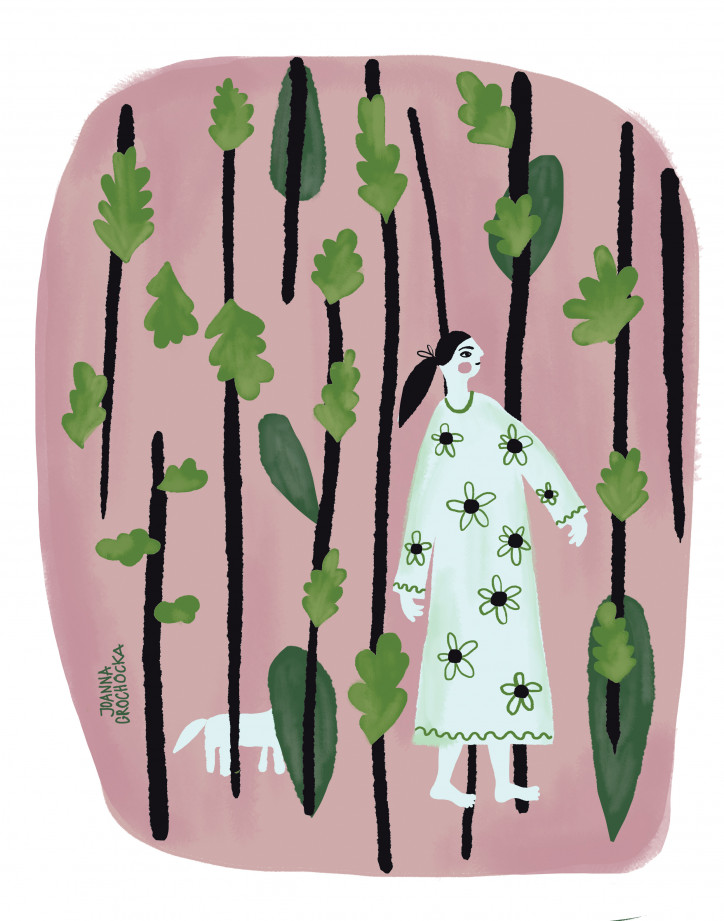
Translated from the Polish by Kate Webster


